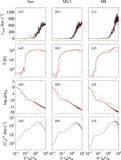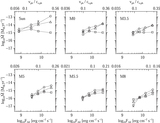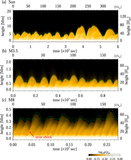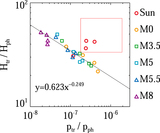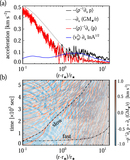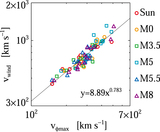Image Details
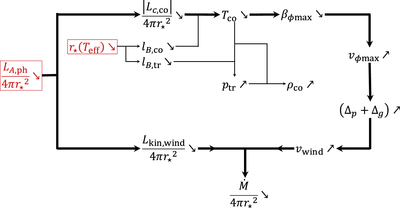
Caption: Figure 19.
Causal relations among the varying vwind, Tco, ﹩\dot{M}﹩, ﹩{p}_{\mathrm{tr}}﹩, and ρco with respect to decreases in ﹩{L}_{{\rm{A}},\mathrm{ph}}/(4\pi {r}_{\star }^{2})﹩ and r⋆(Teff). Here ﹩{L}_{{\rm{A}},\mathrm{ph}}/(4\pi {r}_{\star }^{2})﹩ and r⋆(Teff) correspond to the vertical and horizontal axes of panels in Figure 18, respectively. The thick arrows depict the results of energy partitioning from LA,ph to Lc,co or Lkin,wind. In particular, the decrease in ﹩{L}_{{\rm{A}},\mathrm{ph}}/(4\pi {r}_{\star }^{2})﹩ causes cooler Tco, faster vwind, and smaller ﹩\dot{M}/(4\pi {r}_{\star }^{2})﹩. How these energy conversion efficiencies are determined is beyond the scope of the present study, but we mention that the energy conversion efficiency from LA,co to Lkin,wind (αwind/A) is independent of stars, chromospheric magnetic field strengths, and energy inputs from the photosphere (Section 5.2). Here αwind/A is possibly dependent on the filling factor of the open flux tube (Appendix A).
Copyright and Terms & Conditions
© 2021. The American Astronomical Society. All rights reserved.




